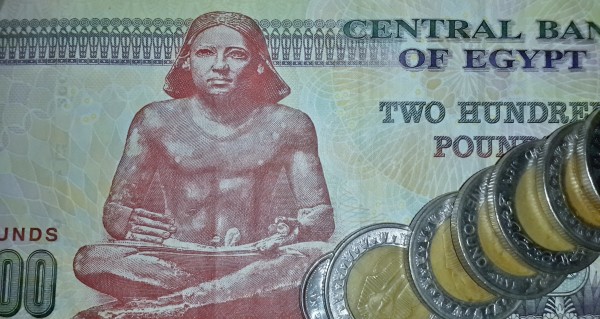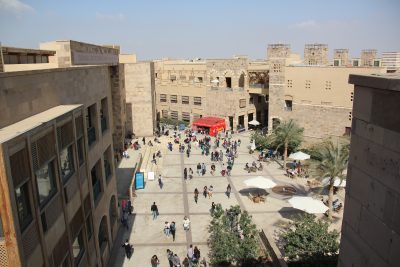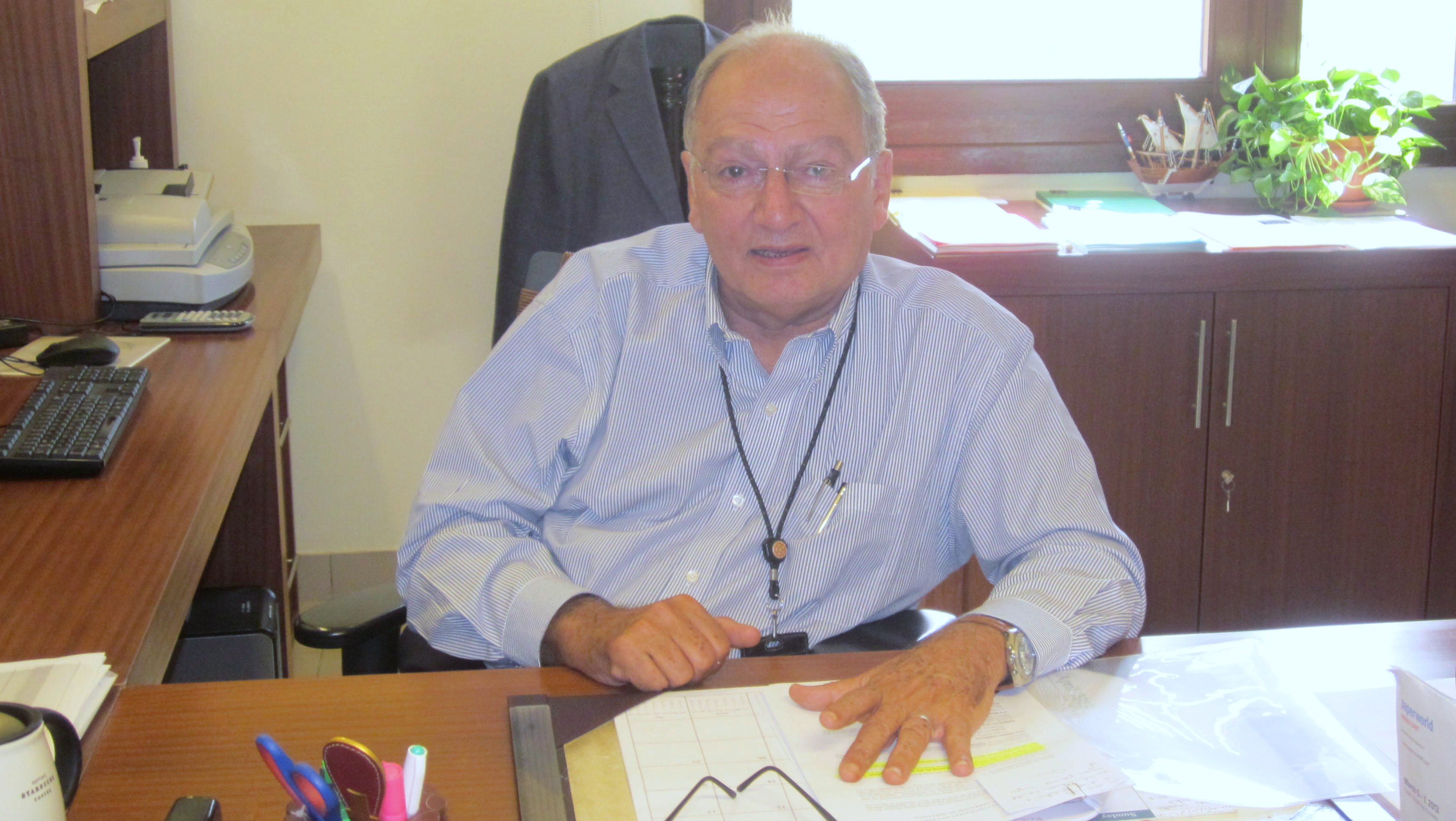What’s in a Geneih? How Egypt’s Identity was Reflected in 3,000 Years of Currency
BY MOHAMED SHAKER
@KATATNEY

Coinage has been used throughout history to give legitimacy to kings, emperors, and colonizers and has reflected all aspects of society from political philosophy to religion.
While the ancient Egyptian economy was loosely based on the weight of precious metals called Deban, it wasn’t until the conquests of Alexander the Great around 350 BCE that this was replaced with the first instance of coinage. Coins were minted with the head of Zeus on one side and Hercules on the other and engraved with ‘Alexander the King’.
Following the downfall of the Roman Empire, the Egyptian currency briefly came under the influence of Byzantine Emperor Heraclius and his gold Solidus, which was embalmed with profiles of Constantine on both sides.
At the end of the 7th Century, this was replaced by the Arab Caliphate’s gold Dinar which depicted Islamic writings on both sides. But with every new of a Caliph so, too, was the name on the coin changed.
Egypt then suffered through turbulent times with many colonizers ranging from the Fatimids, to the Ottomans, each attempting to introduce their own currency into the Egyptian treasury and failing.
It was only during the rule of the French that the annotation of LE which stands for livre égyptienne was introduced and endured to modern times.
Following the British occupation of 1882, the Egyptian pound was pegged to the sterling pound, giving rise to the word Genieh which stems from the British currency the Guinea.
In 1914, the Egyptian pound was pegged to the equivalent of seven grams of gold. This equate to EGP 1,800 today.
Paper notes were introduced during this era depicting national projects such the excavation of the Suez Canal.
The notes largely paid homage to the monarchy by printing King Farouk’s image on the currency.
Currency of Revolution
Following the exile of the King in 1952, Egypt’s Central Bank focused primarily on printing Egyptian and Islamic artifacts, disregarding many prominent figures in Egyptian history.
The age-old tradition of replacing the currency of the new rulers began once again with the newly produced nationalistic and patriotic notes – all aspects of which President Gamal Abdel Nasser wanted to introduce into Egyptian society.
During this time Egyptians were on a high from finally being freed from the imperialism that had plagued Egypt for so long.
Patriotic movies and songs dominated the TV screens and radio, and the Egyptian currency was finally by the people, for the people.
It still smelled fresh and was full of promise.
“When I was young, the single Egyptian pound had worth. Now it’s just fakka [loose change]” laments Aziza El-Azghal, a 76-year old cloth factory owner.
Hers is a view shared by many Egyptians who grew up in the 40s, 50s and 60s, considered by many as the ‘golden era’ of Egypt’s recent history.
“Today, if you try and give one pound to a parking attendant [sayis] he’ll give you a dirty look and refuse it,” she says.
El-Azghal goes on the explain that when she married her husband in the late 60s, he was a residential doctor in a hospital and received EGP 11 pounds as a monthly salary. That was enough to pay for rent (5), electricity, water, food and still have some left over. “EGP 11 won’t even buy you a McDonalds meal now.”
Rabea Abdel-Hady, a driver for local real estate company Sorouh, recalls fondly that in the 1980’s he would sometimes receive an EGP 5 tip from his employer with which he would buy a full meal from the infamous local burger restaurant, at that time; Wimpys.
“I felt a tip was actually a tip. I could actually spend it on something substantial, rather then having to save up for something I wanted.”
Does Devaluation Lead to Loss of Identity?
As the value of the Egyptian pound tumbles downward in light of political instability since January 2011, and a number of terrorist attacks following the removal of former President Mohamed Morsi, a large number of Egyptians are pessimistic about the country’s economic future.
In mid-2013, amid countrywide protests against Morsi, Egypt’s currency weakened by approximately nine per cent, the largest fall in 10 years.
Despite this, many Egyptians still hold on to the sense of pride they feel when they hold Egyptian currency in their hands.
As Samir Aref, board member of Al-Ahram Security Group explains: “I remember the notes changing over time and their value along with it. [But] although the bank notes have been devalued over time, what is [printed] on them hasn’t.” Images of the pyramids and the Al Rifai’ mosque still stand proud in our notes as they do on our land.
Randa Hesham, an ex- tourism guide operator, recounts what it was like when tourists would first exchange their foreign currencies: they would be excited and ask questions on what was on the notes and what they represented in Egyptian culture.
“Knowing all the important landmarks I would feel a certain sense of pride while telling them all about the Mohmamd Ali Mosque and the Temple of Edfu.” Hesham explains that the “pan- cultural feel of the Pharaonic and Islamic history together reflected how diverse Egyptian culture really is”.
Younger generations, however, might not share the same enthusiasm for what is printed on the notes. Many see them as a means to an end. “I just see it as money, with the exception of the occasional bigger-than-wallet size 200 LE note,” Mohab Abu Gabal, an MICT major undergraduate, says.
Abu Gabal says that EGP 100 is spent so quickly that its importance is diminished in his view. “But when I see the older notes framed in my father’s office I see them as big notes, grand in a sense, worthy to be framed.”
And those abroad might have an even more negative impression of Egyptian currency as they see their country’s problems arise from
“The view of the Egyptian pound abroad is a reflection of how non-Egyptians see us,” says Rajia Aboulkheir, who works as an Al-Arabiya journalist in Dubai.
“I’ve been here for three years, and I’ve seen how Emiraties talk about us. Tourists who go to visit think we’re a cheap country. Our currency is cheap, and our culture is no longer the rich, valuable one it was.”
The turmoil following the 25 January revolution greatly impacted the value of the Egyptian pound leading the economy into deeper turmoil. As equity analyst at CI Capital Ahmad Saharty explains, “Foreign reserves dipped greatly in the years following the revolution and the Egyptian pound being pegged to the dollar has seen it lose its value month after month.”
Although Egypt’s Central Bank has made attempts to manage the tumbling value of the pound, most policy changes have not resulted in the desired outcome.
The value of the Egyptian pound is still more than monetary. For the inauguration of the Suez Canal expansion, a limited edition coin of the Canal was minted, highlighting its importance in Egyptian history. What’s on the notes still sends out messages loud and clear.
“When I was in Mexico, I noticed their currency has Frida Kahlo [famous artist] printed on them, to highlight her relevant importance in the art world.” says Khaled El- Sayad a George Washington University graduate.
“I’m glad we can print on our money what we are doing now, focusing on the evolution of our present, rather than live in the grandeur of our past.”
“Can you think of anything on our money that isn’t something Egyptians used to be?’” asks Zeina Zahra, an AUC business and mass communications student.
“It would make me proud to see any of the famous Egyptian artists or scientists on our money, or even a special edition signifying the 25th of January revolution. If our money doesn’t evolve, then it also shows that we don’t.”



